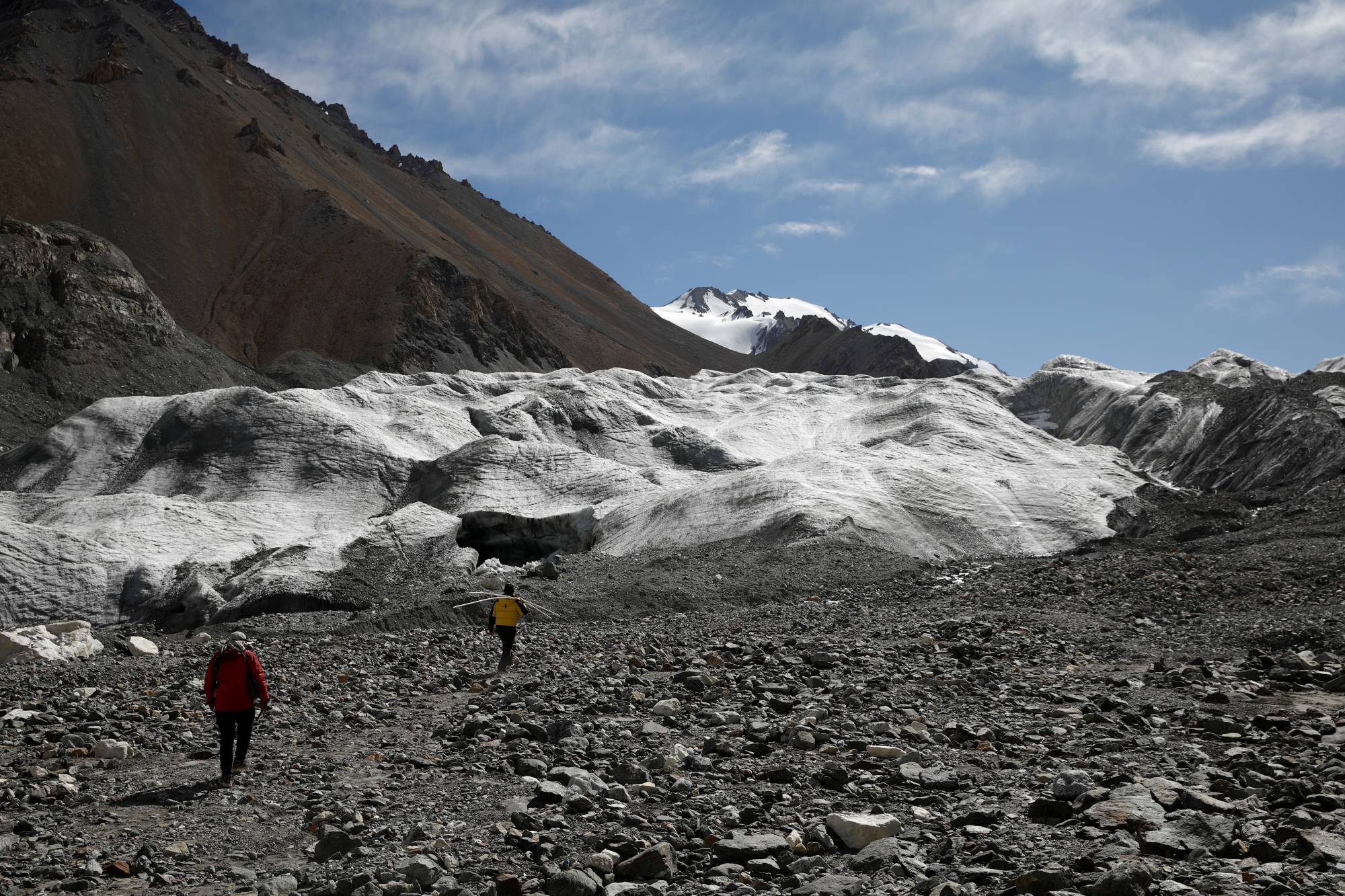The air was thin as a group of scientists trudged through snow near the peak of the Dagu Glacier in southwestern China on a gloomy June morning. It was quiet up there, 3 miles above sea level, except for the sound of running water — a constant reminder of the ice melting right beneath their feet.
As they trekked upwards, oxygen canisters tucked into their fleece jackets, porters walked alongside carrying thick rolls of white fabric. The researchers planned to spread those sheets across more than 400 square meters of the mountain. The film was designed to reflect the sun’s rays back into the atmosphere, effectively shielding the glacier from the heat and hopefully preserving some of its ice.
For decades, Dagu has supported the lives of tens of thousands of people who live around it. The glacier’s meltwater provides drinking water and helps to generate hydropower while the majestic views of the Tibetan Plateau can attract more than 200,000 tourists a year, fueling an industry that keeps over 2,000 people employed. Now all that is under threat as the planet warms.



















With your current subscription plan you can comment on stories. However, before writing your first comment, please create a display name in the Profile section of your subscriber account page.